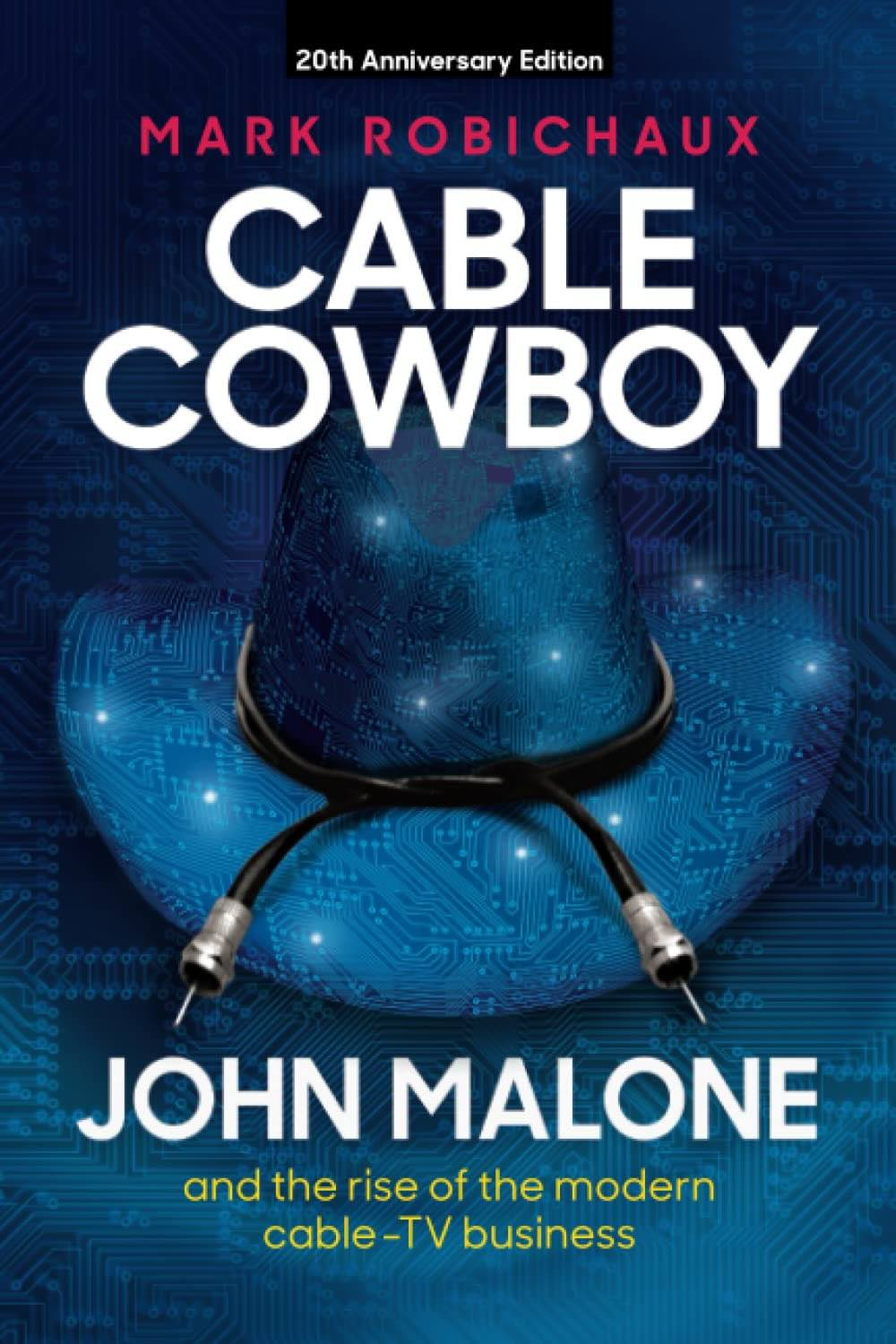John Malone’s Genius Was Owning Infrastructure
I finished reading Cable Cowboy: John Malone and the Rise of the Modern Cable-TV Business. I learned a ton about Malone as well as the cable industry and its importance in technological evolution.
Cable systems own and are responsible for the wires that deliver digital information to and from consumers’ homes. This book illuminated the impact that cable companies have had on life as we know it, how valuable their last-mile delivery service has been over the years, and why they made John Malone a billionaire.
Cable has gone through three periods:
- Antenna extension – In the 1950s, the big three broadcast networks (ABC, NBC, and CBS) ruled television, but their signals didn’t reach rural areas. Rural residents couldn’t watch the evening news or shows enjoyed by large and medium-sized towns. Cable entrepreneurs erected large antennas to pull down broadcast signals from TV stations in larger cities nearby. They ran wires to rural homes to pump the pirated broadcast signals to rural residents. These entrepreneurs charged a monthly fee but paid nothing for programming. Cable systems were antenna extensions that made broadcast networks more accessible.
- Programming – Regulators outlawed the pirating of broadcast signals in the 1970s. In 1975, the upstart HBO and cable system owner Time Inc. used satellites to broadcast to consumers the Ali–Frazier boxing match live from the Philippines. This was revolutionary then and something the big three broadcasters couldn’t pull off. Satellites transformed cable economics. Programming exploded, with channels such as ESPN, Showtime, WGN, CNN, and BET launching. Demand for cable service in urban areas also exploded, kicking off a rush to wire every home in America for cable.
- Internet – By the 1990s, it was internet usage that was exploding in America. The internet was the future, but accessing it was still painful. Dial-up services, such as America Online (AOL), were slow. Cable became the best option for delivering fast internet access to homes. Internet entrepreneurs, including Microsoft’s Bill Gates and Paul Allen, each spent several billion dollars buying into cable companies so they could own part of the infrastructure delivering the products and services tech entrepreneurs created. Cable companies went from mainly providing access to unique programming to also providing access to the World Wide Web.
Malone was recruited to TCI in 1972, at the end of the antenna extension era, and was CEO until the company was sold to AT&T for $48 billion in 1998. While Malone couldn't have predicted how technology would evolve over his decades as CEO, he recognized the value in what TCI had. A direct line into American homes. A way to get data and information in and out of homes. His genius was keeping a finger on the pulse of where technology was going and partnering with the entrepreneurs building technology that improved consumers’ lives. Over the years, TCI partnered with and owned stakes in programming channels, satellite companies, cable box manufacturers, internet companies, and others while continually building its cable system and increasing the number of subscribers.
Malone’s career highlights to me that to have outsize success, predicting where technology is going isn’t necessary. Sometimes, owning the infrastructure that new technologies will likely rely on for distribution will be lucrative and allow you to continually benefit through numerous technology cycles.
Listen to the audio versions of my blog on Apple Podcasts and Spotify. Tune in here and here!




